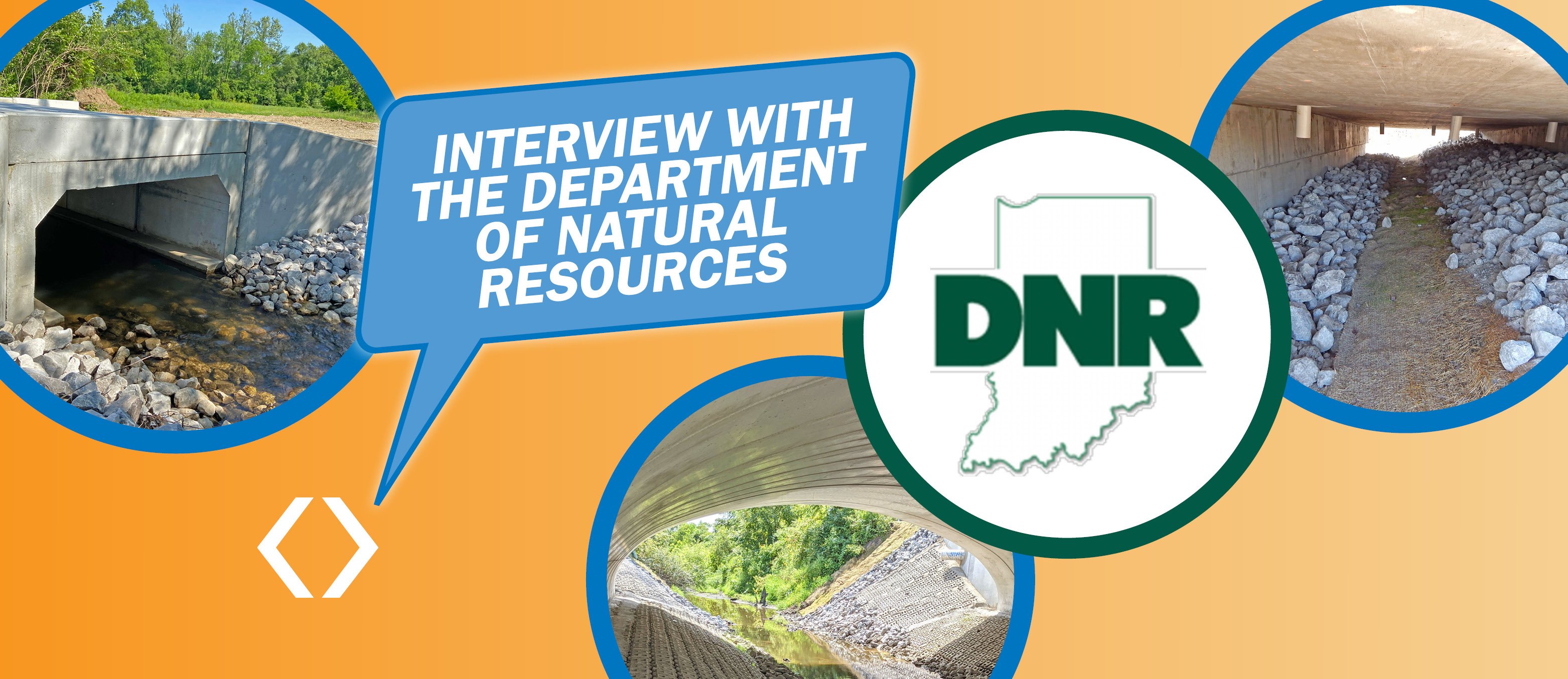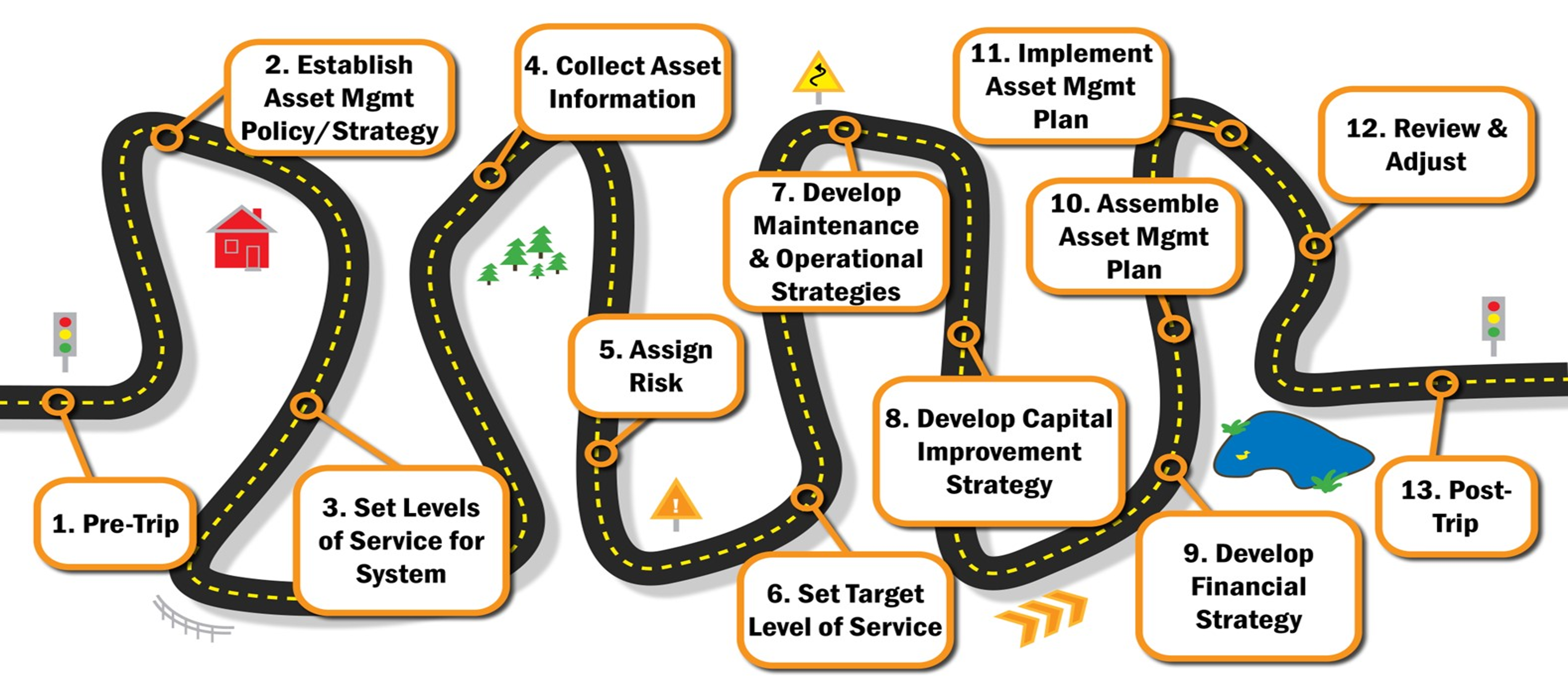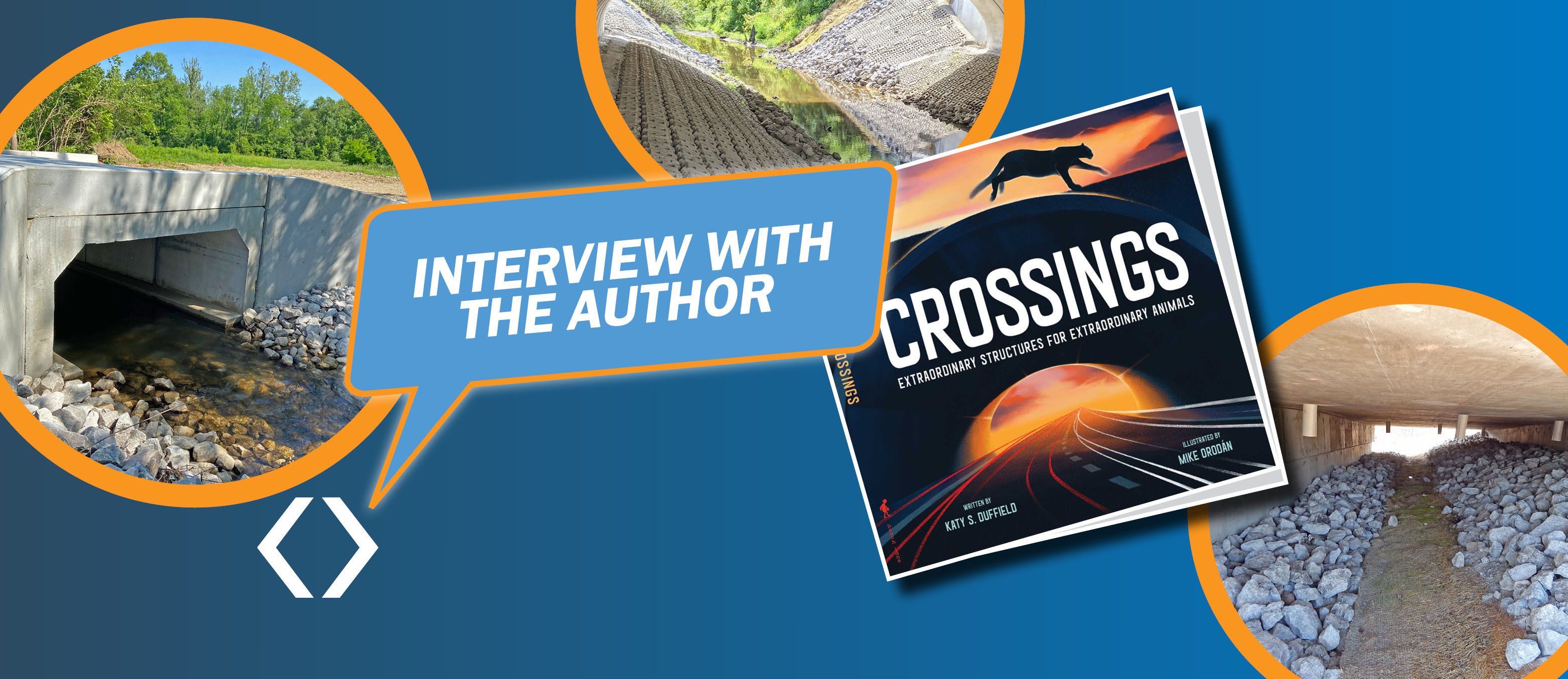In November, Clark Dietz's Kevin Hetrick, PE, was featured in Civil + Structural Engineer magazine. In the article, Kevin interviewed Brian Boszor of the Indiana Department of Natural Resources; his insight into why wildlife crossings are critical to the conservation and proliferation of wildlife confirmed our support for these structures during design and construction of new infrastructure. While we were only able to use a portion of Kevin's Interview with Brian in the article, we have included the entire conversation below:
Which species benefit from wildlife crossings in Indiana? Why are these species ecologically important?
All terrestrial wildlife species can benefit from wildlife crossings under bridges and culverts in Indiana. There are some species however that are much more heavily impacted by bridge and culvert designs that do not consider wildlife passage.
One group of species that will benefit significantly from the wildlife crossing recommendations we are making as part of our Construction in a Floodway permit reviews are reptiles and amphibians. Many terrestrial reptile and amphibian species have difficulty navigating the riprap slope protection that is commonly used for bridge and culvert projects. Many of these species also actively avoid crossing paths, trails, and roadways. Bridges and culverts that do not include an appropriate wildlife crossing can isolate reptile and amphibian species from important habitat features they require to complete their life cycle. Linear infrastructure can also isolate different populations of reptiles and amphibians from one another which decreases genetic diversity and increases the possibility of small, isolated populations declining over time.
Reptiles and amphibians are ecologically important species because many of them tend to rely on both terrestrial and aquatic environments and are significant parts of the ecological functioning between the two environments.
Other species that will benefit from our wildlife crossing recommendations here in Indiana include mammals such as raccoon, opossum, fox, coyote, white-tailed deer, and humans (i.e. motorists). These species are the ones most commonly involved in wildlife/vehicle accidents. White-tailed deer collisions in particular cause significant numbers of deaths and injuries for Indiana motorists every year. Making sure that bridges and culverts can effectively pass wildlife under a structure rather than over a road will help make our roadways safer for wildlife and humans alike.
We understand that you are using Clark Dietz’s detail to share with permit applicants performing work in the State. What key features are you looking for when providing solutions for safe wildlife passage?
We have shared a wildlife crossing detail with other permit applicants that was provided by Brian Powers from Clark Dietz. His detail basically specified a flat level area along a riprap slope that can be backfilled with compacted aggregate or natural substrate to allow for wildlife passage along a spill slope. His detail was one of the first of its kind submitted as part of a Construction in a Floodway Permit application here in Indiana. There are certainly many other wildlife passage design options, but Brian’s detail was very much in line with the designs that State DOT’s such as Minnesota and Maine are currently recommending.
The key features of Brian’s crossing detail that should be considered for any wildlife crossing were the inclusion of a flat level pathway across a 2:1 spill slope, the ability to back fill the area with smaller substrate that is passable to a wider variety of wildlife species, the placement of the pathway above the ordinary high water mark, and the ability to tie the pathway into existing elevations upstream and downstream of the bridge or culvert.
Ideally, we would like to see the use of larger bridge and culvert spans that leave the natural stream banks intact without the need to design a wildlife crossing. However, many bridge and culvert projects here in Indiana are replacements of existing structures with existing site restrictions so the use of a design detail such as the one Brian submitted could be very useful in those situations.
How do you feel about “road ecology” or how infrastructure affects nature? Where do you see the biggest room for improvement in the future?
It is important to note that linear infrastructure can have a significant impact on nature both directly and indirectly. Road ecology is the study of those impacts. Road, bridge, trail, and utility line construction have been shown to impact fish, wildlife, and botanical resources in seven major ways: mortality from construction activities, mortality from maintenance activities or collision with vehicles, modification of animal behavior, alteration and fragmentation of the physical environment, alteration of the chemical environment, spread of invasive plant species, and increased human use and disturbance of natural areas. The evidence from well-designed studies suggests that well-connected habitat corridors are valuable conservation areas for fish, wildlife, and botanical resources.
The biggest room for improvement here in Indiana is the design of our linear infrastructure to make it more permeable to wildlife movement and more resilient to changing conditions. The importance of this issue is gaining momentum here in Indiana. The Division of Fish and Wildlife has created a working group to assess wildlife crossing needs both on their own properties as well as on State, County, and local roadways. Indiana Dunes National Park has recently taken the first steps toward creating a master plan for wildlife friendly roads and trails both on their own property as well as on existing access roads to their property.
What would you like the public to understand about the importance of wildlife passage in their communities?
Most municipalities here in Indiana have at least one major waterway that bisects their town or city. Wildlife species use these waterways in much the same way that humans use a roadway. The waterways and their riparian habitat provide important travel corridors through urban areas for a wide variety of wildlife species. The number of different wildlife species that can pass through an urban area is directly related to the number of passable bridge or culvert structures. Wildlife passage is critical to maintaining healthy wildlife populations, which benefits people that hunt and fish as well as those who just enjoy seeing or knowing that wildlife is present around them.
Many municipalities are beginning to understand and appreciate the value of their waterways. Riverwalk trails and other riverfront amenities are becoming more popular. If communities can begin to understand how important their waterways are to wildlife as well, perhaps more support for wildlife crossings can be cultivated. Imagine laying down a layer of riprap over Washington Street in Downtown Indianapolis? How disruptive would that be to motorists and pedestrians? Many wildlife species face these challenges at the majority of bridge and culvert crossings in Indianapolis and across the State.
We read that there are only approximately 1,000 crossings in the U.S. for over 4M miles of roadway. How do you think the DNR, Engineers, and the public can combine our efforts to prioritize wildlife conservation as it relates to infrastructure?
I believe these statistics may be specific to wildlife crossings that are independent of bridges and culverts over waterways. These types of structures include wildlife overpasses over highways for large mammals such as bear, mountain lion, deer, and pronghorn, or culverts designed specifically for habitat connectivity such as reptile and amphibian tunnels under a roadway. Here in Indiana, we have only one standalone wildlife crossing structure that was designed specifically for the passage of white-tailed deer under the new I-69 extension near Somerville, IN.
The Division of Fish and Wildlife is actively working on identifying more potential standalone wildlife crossing locations throughout the State. In terms of wildlife conservation as it relates to infrastructure projects, the Division of Fish and Wildlife Environmental Unit may be able to have the biggest cumulative impact. Each Environmental Biologist reviews roughly 30 to 40 projects per month. Perhaps a quarter of those projects involve a bridge or culvert that could be designed to provide a wildlife crossing. With 4 Environmental Biologists recommending roughly 7 to 10 wildlife crossings per month, we can potentially help improve roughly 100 bridges and culverts per year for wildlife passage. Many engineering firms here in Indiana, including Clark Dietz, are coming up with great solutions to improve wildlife passage as a part of their bridge and culvert designs in coordination with the Division of Fish and Wildlife Environmental Unit.
It has been suggested that solutions to wildlife passage may serve as a topic of Bipartisan healing due to the wide support provided by the public. Why is now the right time to push for adoption of wildlife conservation solutions?
The Bipartisan Infrastructure Bill has outlined roughly 9 new and expanded Federal and State funding mechanisms for the analysis, design, and implementation of wildlife crossings related to infrastructure projects. There has literally never been a better time to work on improving the permeability of our linear infrastructure for fish and wildlife passage as well as human safety.
What do you think the future holds for conservation technology or improvements in infrastructure? For example, we have read about mobile wildlife crossings as a potential solution for changing migration patterns.
I can’t think of a better example than the one you provided. The ability to create a modular wildlife crossing over a highway that can be moved or expanded as wildlife movement patterns change over time is an interesting concept for sure. Technology is also leading to the exploration of new building materials and techniques that could make the design and construction of wildlife crossings more efficient and less expensive. Other technology-based solutions include sensors along roadways that can alert vehicle operators to wildlife movement in the area or the use of mobile phone apps that allow vehicle operators to report wildlife vehicle conflicts to help in the identification of appropriate sites for a wildlife crossing.
Can you discuss preferred materials of which crossings should be constructed, and what rules should be applied for determining the size of a wildlife passage?
Expanding the size of a bridge or three-sided culvert to allow it to be constructed over a stream channel while leaving the natural banks intact is the ideal solution for a wildlife crossing. Roughly 1.2 times the OHWM or ideally the bank full width is typically sufficient for providing wildlife passage along the banks.
For more challenging sites where a larger structure is not possible, the use of materials that are familiar to engineers and contractors is a good alternative. Restoring bank lines under a structure using leveled riprap that can be backfilled with graded aggregate or natural substrate has been shown to be very effective for creating a wildlife crossing. A wildlife path or bank line should be 1 to 3 feet in width at a minimum. Other materials and techniques that have been used effectively here in Indiana for smaller box and pipe culverts include the installation of expanded metal wildlife passage shelves, concrete ledges, and stacked stone blocks.
In terms of determining the size of a structure for wildlife passage, that is dependent on site conditions. In general, the design of a stream crossing structure should not create conditions that are less favorable for wildlife passage through an area when compared to pre-disturbance conditions. For a brand new structure proposed in a previously undisturbed area, this would mean ensuring that the structure can pass all wildlife species of concern, including white-tailed deer. A structure should have roughly 8 feet of height clearance and roughly 20 feet of width clearance at a minimum to accommodate white-tailed deer passage. Beyond the design of a new structure in a previously undisturbed area, there are many options to consider in terms of the sizing and location of a wildlife passage and we recommend that consulting and engineering firms coordinate with a Regional Environmental Biologist to address wildlife passage concerns as early as possible in the design process.





